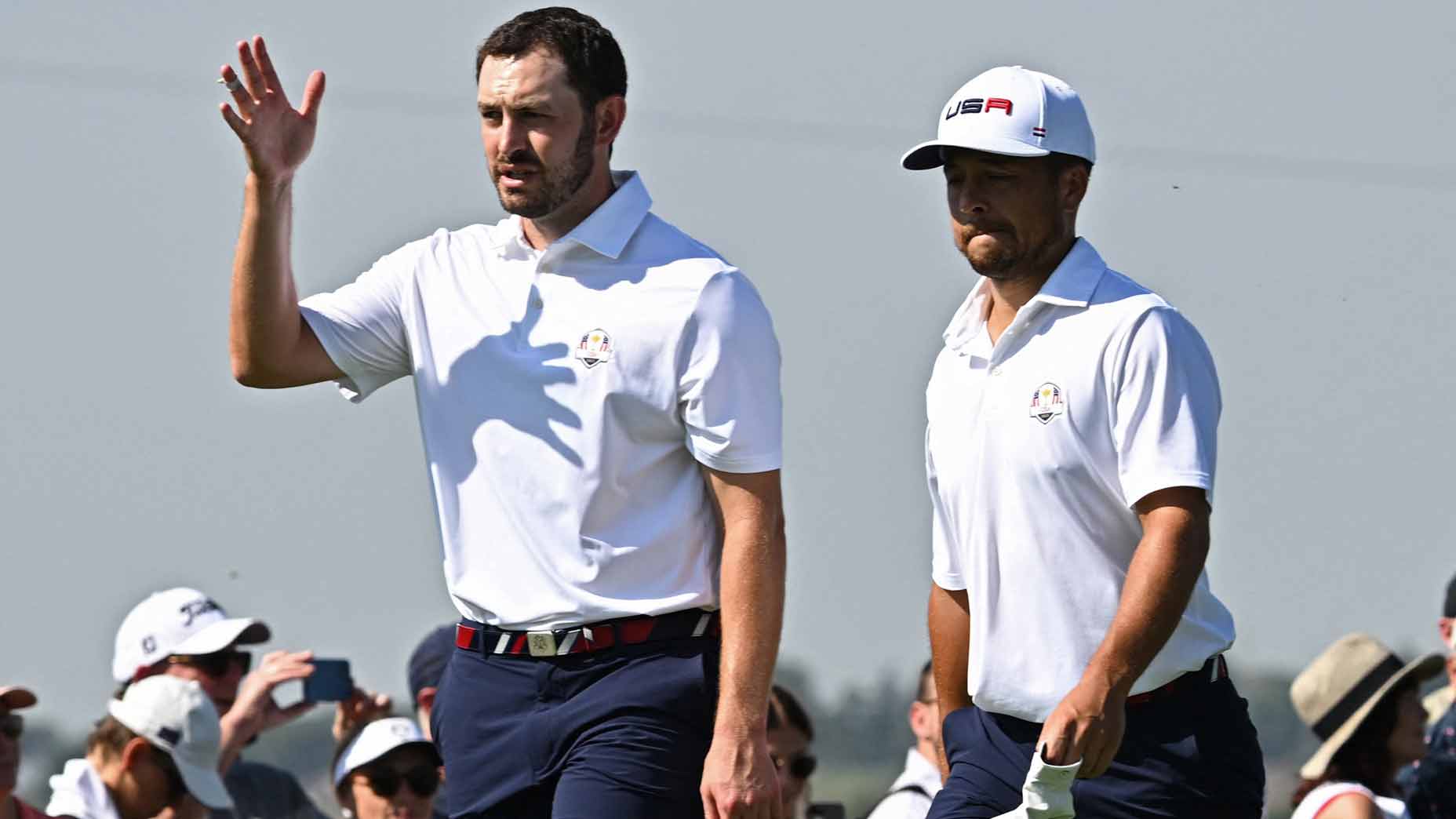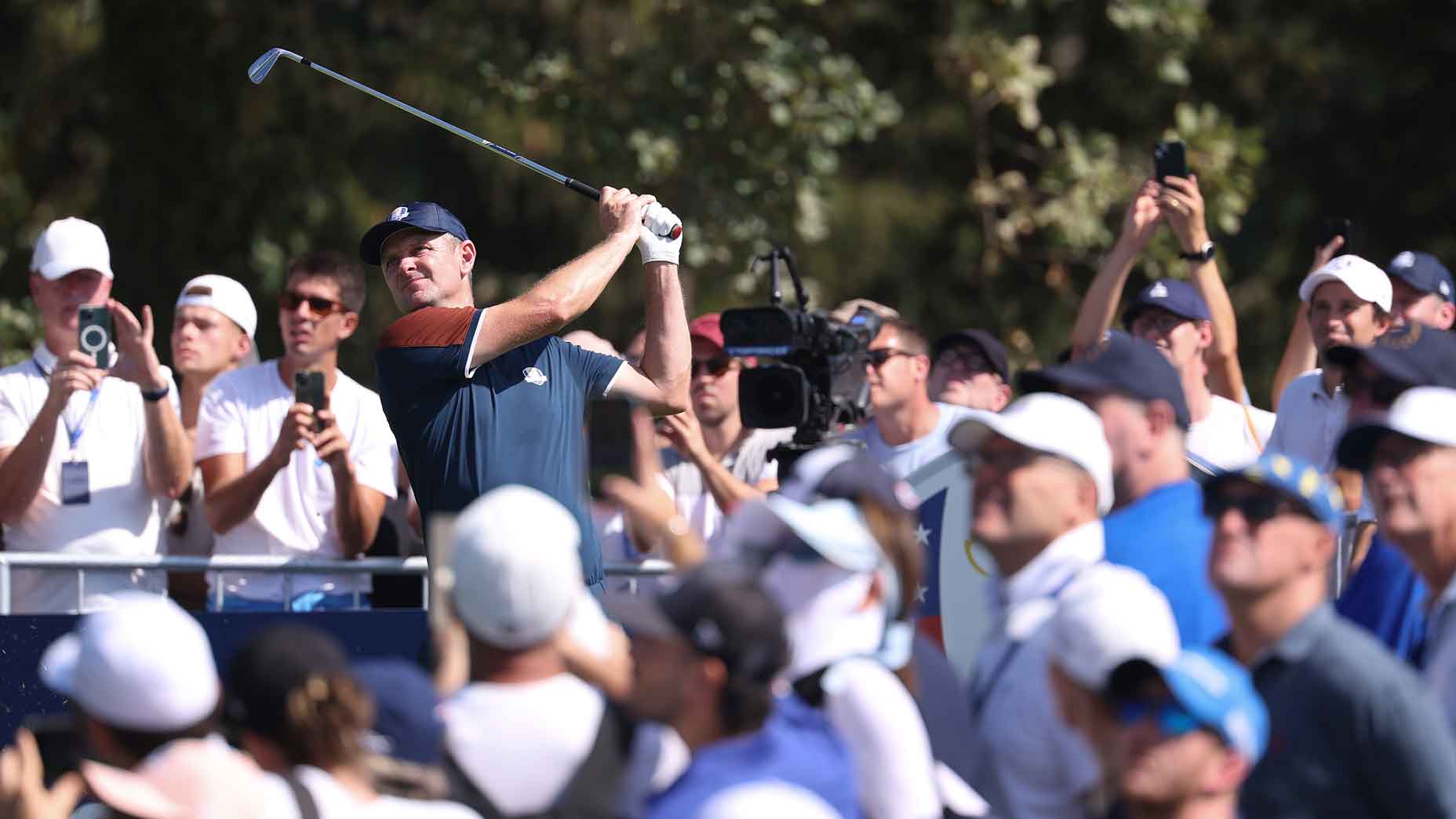
The Ryder Cup utilizes two unique team formats in foursomes and four-ball.
Getty Images
After two years of waiting, the Ryder Cup is finally upon us. Marco Simone Golf Club is the venue this year, and the stakes are as high as ever. The Americans are looking to break a 30-year drought across the pond, while the Europeans are hoping to continue their home-field dominance with a crop of new young stars. It promises to be an exciting weekend in Rome.
When the matches kick off on Friday morning, the duos for each team will be utilizing a four-ball format. And when they return for the afternoon session, they’ll be competing in the foursomes format. This is typical of team competitions like the Ryder Cup (and Solheim Cup), but the nuances of each format may still be unfamiliar.
Foursomes and four-ball might have similar names, but they are distinctly different games. And with the formats coming to the forefront this week in Italy, it’s important to know the differences. Watch the video above, or read below for a brief rundown of what makes each format unique.
Foursomes
Foursomes is a form of team match or stroke play covered under Rule 22 in the Rules of Golf.
According to the Rules of Golf, “(Foursomes is) a form of match play or stroke play where you and a partner compete as a side by playing one ball in alternating order on each hole. You and your partner must alternate in teeing off to start each hole.”
This format is also known as alternate shot and has been a bit of a specialty for the Europeans over the years with a 62½-49½ lead since 1993.
Four-ball
Four-ball is also a form of team match or stroke play, and it is covered under Rule 23.
According to the Rules of Golf, “Four-ball is a form of play (in either match play or stroke play) involving partners where you and your partner compete together as a side, with each of you playing your own ball, and your side’s score for a hole is the lower score of the two of you on that hole.”
This format is also known as best ball or low ball.








